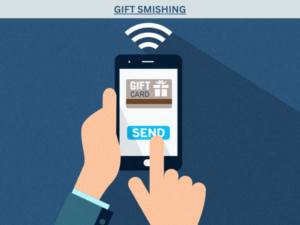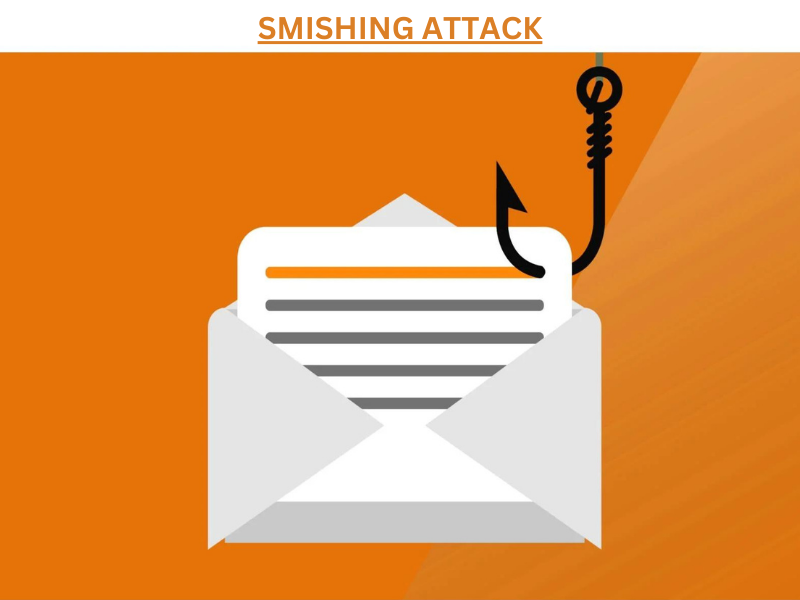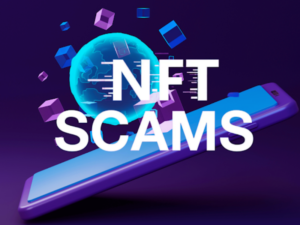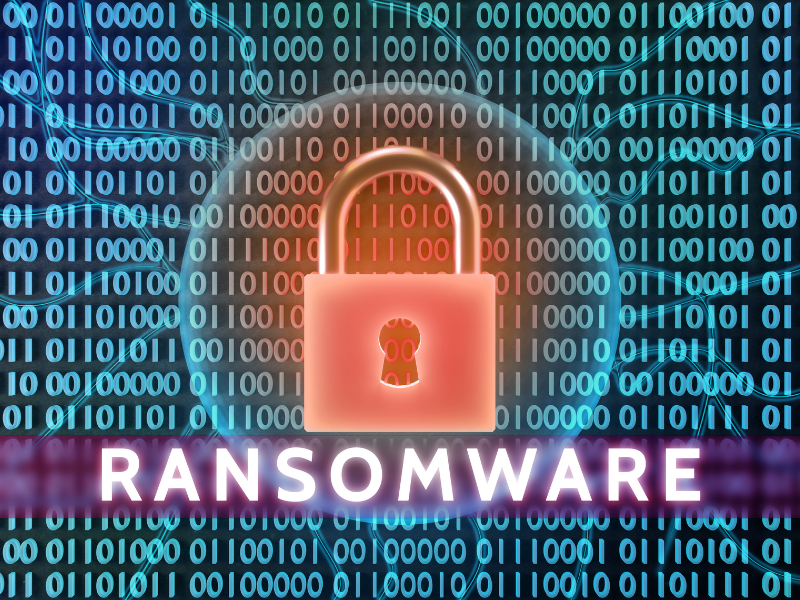Picture this: You’re going about your day, checking your phone for messages and notifications, when suddenly you receive a text from what appears to be your bank. The message claims that there’s been suspicious activity on your account and urges you to click on a link to resolve the issue. You click on the link, only to realize too late that you’ve fallen victim to a smishing attack. Sounds familiar?
In today’s interconnected world, smishing attacks are becoming increasingly common and sophisticated. Text messages are used in these assaults to trick victims into supplying personal information or downloading malware onto their mobile devices, leaving them vulnerable to identity theft and financial loss.
But don’t worry – we’ll arm you with the knowledge and tools to protect yourself from smishing attacks. From understanding the different types of smishing attacks to prevention strategies, we’ve got you covered. So grab your phone, and let’s dive into the world of smishing attacks.
What is a Smishing Attack?
Smishing is a type of social engineering assault in which victims are tricked into disclosing personal information or downloading malware onto their mobile devices via text messages. It combines the terms “SMS” (short message services) and “phishing” and relies on exploiting human trust rather than technical exploits.
Cybercriminals use two methods to steal personal data: malware or malicious websites. Text messages used in smishing scams often pretend to be the victim’s bank, with the aim of obtaining personal or financial information like ATM or account numbers. As more people use their personal smartphones for work, smishing is becoming a business and consumer threat.
Smishing has become the most common type of harmful text message, and it is a growing security risk as mobile device usage grows. Understanding how smishing attacks work and implementing best practices for mobile security is essential for protecting personal and company data from cybercriminals.
How Do Smishing Attacks Work?
Smishing attacks use deceit and fraud to deceive victims into disclosing personal or financial information. The attacker can manipulate their decision-making through social engineering tactics by assuming an identity that the victim trusts, such as a bank or organization.
They achieve it by leveraging the three factors of trust, context, and emotion to write messages that spur the recipient into taking action, such as opening a URL link within the text message. The attacker then leads the victim to a phishing tool that prompts them to disclose their private information.
Targets are selected based on their affiliation with an organization or regional location. Attackers use various disguises related to the institution they wish to gain access to or any mask that will help them acquire the victim’s identity or financial information. Attackers use spoofing and burner phones to hide their true phone numbers behind a decoy.
An attacker’s smishing scheme is successful once they have used the victim’s private information to commit the desired theft, such as stealing from a bank account, committing identity fraud, or leaking private corporate data.
Examples of Some Popular Smishing Attacks
Smishing attacks have a variety of targets, including individuals for identity theft and business employees for cyberespionage. Four main types of smishing attacks share identifiable traits to help detect them. As smishing attacks grow, certain patterns indicate how cybercriminals use them and who they impersonate to gain trust.
Specific smishing scams are particularly successful because the organization being impersonated is widely known or used, making them more convincing. These attacks are often disguised as common entities, including:
- Delivery services such as UPS, FedEx, and USPS are frequently exploited in smishing attacks, with a message indicating that the product has been delayed or requires confirmation, as well as a link.
- Amazon is also targeted in smishing attacks, where cybercriminals can gain access to a user’s password and find stored credit card information and other private data.
- Financial services like PayPal, Apple Pay, and banks are targeted in smishing attacks as they easily induce fear of losing money or compromise banking credentials, encouraging people to act quickly.
Difference Between Phishing vs. Smishing
Phishing and smishing are both types of cyberattacks used to steal personal information. Phishing attacks take advantage of emails or other forms of electronic communication to deceive victims into clicking on a malicious link or providing personal information. Smishing attacks, which use text messages rather than email, employ similar deception strategies.
Smishing is becoming more common because people are more likely to trust and respond to text messages. To stay safe, avoid unwanted messages, double-check the sender’s identification, and never click on links or supply personal information unless you’re convinced it’s safe.
What are the Various Types of Smishing?
Smishing attacks have similar methods, but their presentation can vary greatly. Attackers use various identities and premises to keep these attacks fresh, making creating a complete list of smishing types almost impossible. However, some common scam premises can help you spot a smishing attack.
Here are a few:
COVID-19 Smishing
Smishing scams related to COVID-19 exploit genuine aid programs meant for recovery from the pandemic, such as those initiated by the government, healthcare, and financial organizations. These scams prey on people’s health and financial concerns and can lead to fraudulent activities. Be cautious if you come across any of the following:
- Contact tracing messages that ask for sensitive personal information such as social security or credit card numbers.
- Messages that promise tax-based financial relief, such as stimulus checks.
- Public health safety updates that require action from the recipient.
- Requests to complete the U.S. Census come via text message.
Financial Services Smishing
Smishing attacks that target financial services usually appear as notifications from financial institutions. Because most individuals utilize banking and credit card services, they are susceptible to receiving general and institution-specific messages. Loans and investments are also common themes in this category.
Fraudsters pose as banks or other financial institutions to trick individuals into committing financial fraud. Characteristics of a financial services smishing attack may involve urgent requests to unlock an account, verification of suspicious account activity, and other similar tactics.
Gift Smishing
 The concept of gift smishing involves enticing people with the possibility of receiving free products or services, often from well-known retailers or companies. Such offers include giveaway contests, shopping rewards, and other free promotions. The attackers play on people’s excitement by emphasizing the idea of “free,” which can result in a faster response. This attack may include signs such as limited-time offers or exclusive selections for a gift card.
The concept of gift smishing involves enticing people with the possibility of receiving free products or services, often from well-known retailers or companies. Such offers include giveaway contests, shopping rewards, and other free promotions. The attackers play on people’s excitement by emphasizing the idea of “free,” which can result in a faster response. This attack may include signs such as limited-time offers or exclusive selections for a gift card.
Invoice or Order Confirmation Smishing
Confirmation smishing is a scam that deceives you by sending false confirmation messages for purchases or service invoices. The attacker may include a link to prompt you to click it out of curiosity or fear of incurring charges. You can identify this scam by looking for multiple order confirmation texts or the absence of a business name.
Customer Support Smishing
In customer support smishing, attackers pretend to be representatives from trusted companies to assist you in solving an issue. Popular tech and e-commerce companies such as Amazon, Google, and Apple are common disguises attackers use. They claim a problem with your account and give you steps to resolve it.
The attacker may ask you to provide a real account recovery code or use a fraudulent login page. Indications of a support-based smishing scam include resolving a customer complaint and encountering issues with account access, billing problems, or unusual activity in the account.
How to Prevent Smishing Attacks

The good news is that protecting yourself against these attacks is relatively simple: do not take the bait. However, it is important to remember that text messaging is a legitimate communication channel for many retailers and institutions, and only some messages should be addressed. To stay safe, it is important to exercise caution and follow a few guidelines.
- Avoid responding to any text messages. Even if the message asks you to reply with a specific keyword, like “STOP,” it could be a ploy to identify active phone numbers. Scammers rely on your curiosity or anxiety, but ignoring the message is best.
- Be cautious of urgent or time-limited offers. If a message sounds too good to be true or asks you to act quickly, it could be a smishing attempt. An approach such messages with skepticism and proceed with caution.
- Contact your bank or merchant directly if you have doubts. Legitimate institutions never ask for sensitive information or account updates via text. If you receive a suspicious message, it’s best to call the institution directly to verify its authenticity.
- Don’t use any links or contact information provided in the message. If you’re uncomfortable with the message, avoid clicking on any links or contacting the sender. Instead, use official channels to verify the information.
- Check the phone number carefully. Scammers may use odd-looking phone numbers, like 4-digit ones, to mask their true identity. Be wary of such numbers and always verify their source.
- Avoid storing credit card numbers on your phone. To prevent financial information from being stolen, it’s best not to store it on your phone.
- Use multi-factor authentication (MFA). Two-factor authentication (2FA) is a common form of MFA that uses a text message verification code. A dedicated verification app, like Google Authenticator, can be even more secure.
- Never share passwords or recovery codes via text. Both passwords and text message recovery codes can compromise your account in the wrong hands. Always use them on official sites and never share them with anyone.
- Install anti-malware software. Anti-malware apps can protect against malicious apps and smishing links.
- Report all smishing attempts to the authorities. If you receive a suspicious message, report it to the designated authorities to help prevent others from falling victim to the same scam.
- Remember that smishing, like email phishing, is a trickery scammers use to steal sensitive information. Stay vigilant and skeptical to protect yourself from these attacks.
Conclusion
In conclusion, smishing is a rising security threat as mobile device usage continues to increase. It uses text messages to trick victims into divulging personal information or downloading malware onto their mobile devices. Cybercriminals achieve this by manipulating their decision-making through social engineering tactics by assuming an identity the victim trusts, such as a bank or organization.
Contact Imagine IT professionals now if you wish to secure your organization against smishing attacks and other cybersecurity threats.





